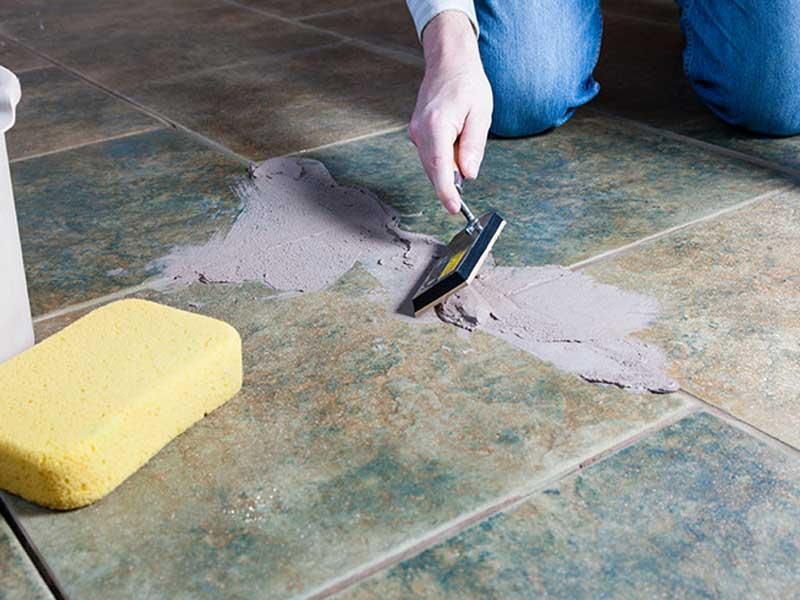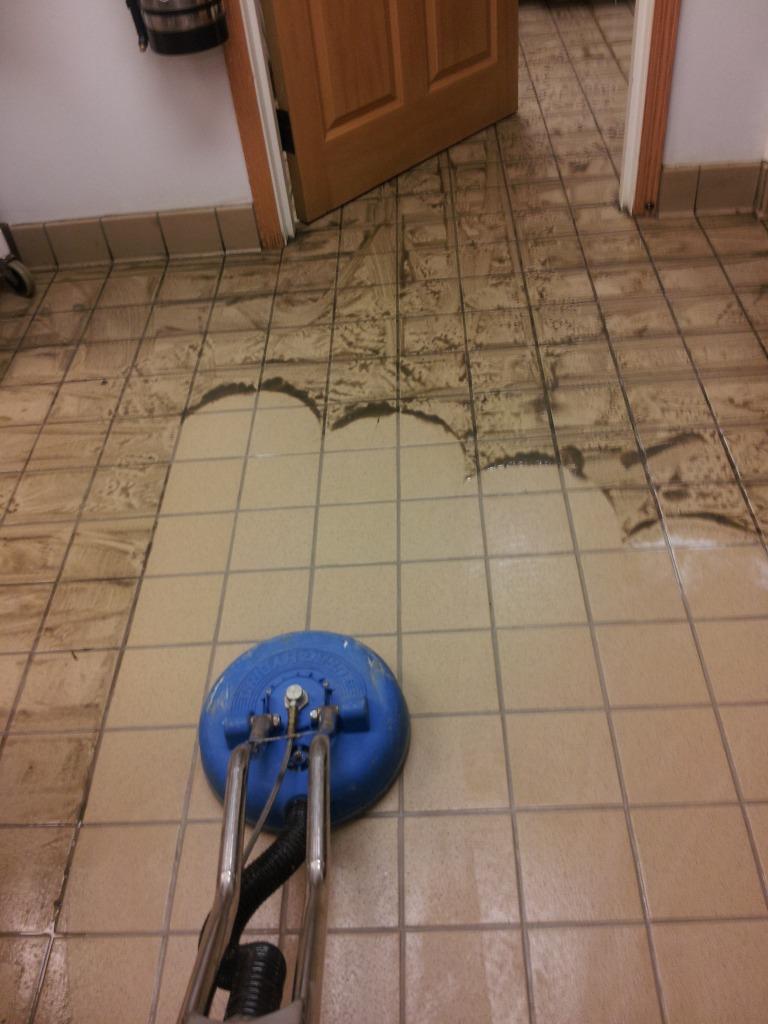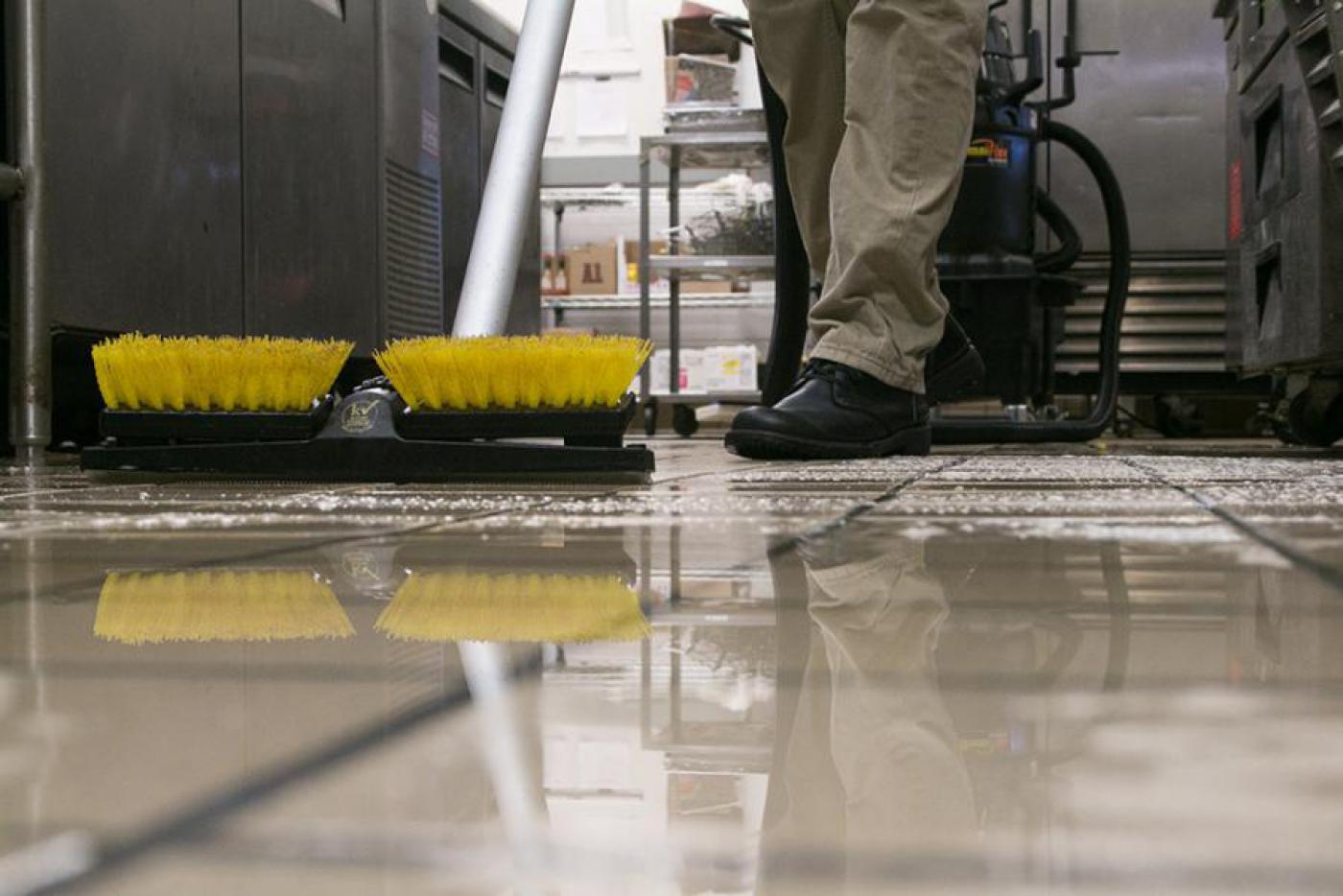Originally imported from Turkey, Travertine is a natural stone that comes in white, gold, and gray. It is often used on the floor, but can also be used to cover walls and make countertops in kitchens and bathrooms. Travertine is durable and beautiful, which makes it a special marble tile at a low price. As a naturally hard stone, unless your travertine is highly polished, there is a risk of staining if left untreated.
Preparation
Before tile sealing your travertine, it should be thoroughly cleaned. Wax or polyurethane coatings should be removed. After removing these coatings, if any, the tiles should be cleaned with a neutral cleaner that is free from bleach and scratches. If your travertine is badly dusted, or if you are renovating old travertine, an alkaline stone cleaner can be used to build up deep clean grease or dirt.
When your travertine is completely clean, dry it thoroughly with an absorbent cloth. Let the area dry for 24 to 72 hours.

Selecting and using the seller
According to MarbleLife.com, there are two main choices to consider when considering sealing: Do you want a solvent-based or water-based seal, and do you get a seal or fast seal? Is?
Solvent-to-solvent wipes are much easier than water-based substances. Water-based seals may be more durable, but you need to be extra careful when removing extra seals, or it can cause minor damage to the upper part of the travertine that professionals need to remove. Skilled craftsman skills are required.
A prominent basement sits at the top of the travertine and involves significant glare or change in the appearance of the rocks. The seals match the seal or the tiles with permanent stains look more uniform. If you like the natural shape of your cut stone, use a sharp seal. A penetration sealer enhances the safety of the sealer without changing the shape of the rock surface.
When buying travertine, consult your dealer to find out which vendor is best for your stone and application.
Seal according to the seal maker's instructions. This is usually done after thinning the sheep wool user and sealer, even after coating the fabric, and then allowing the travertine to dry before walking or using. Before sealing your travertine, it should be thoroughly cleaned. Wax or polyurethane coatings should be removed. After removing these coatings, if any, the tiles should be cleaned with a neutral cleaner that is free from bleach and scratches.
To Seal Or Not
Do you have the option to seal the tile? There are many factors to consider. Location is one of the biggest factors. Knowing where to place your tiles will tell you the type of elements that will be revealed.
As long as your tiles look good, of course, you want to. Understandably, you spent your hard-earned money on it. It may cost you a little more to seal your tiles, but that means your tiles are better protected from wear and tear.

These tiles are more expensive than regular ones. The decision to buy sealed tiles depends on your budget and the availability of materials.
Porcelain and ceramic tiles are two common tiles that do not need to be sealed. However, you should know that there are two parts to a tile. One is the title itself and the other is the grout.
Grout is the area where stains accumulate easily. This is the part of the tile that you need to cover or seal. It is also naturally unsafe so it is easily damaged. On top of that, the sealed grout is very easy to keep clean.
If you seal both grout and tile, your tile will probably last longer than you expected. It also maintains the strength of both grout and tile. Sealing is a great way to protect your tiles from stains, dirt, and spills. These are very common events at home, especially if there are children around.
Sealed tiles and grout can be easily detected. If you sprinkle water on it, the color will not change when the seal is closed. If the surface is deep, it means that it is not sealed and is therefore directly exposed to various elements.
Not all tiles need to be sealed. At the same time, you definitely don't need to seal your tiles. It's up to you if you think it's necessary or not. However, not sealing your tiles can cause some problems such as stains, moisture, mildew, and mold formation.
Also read about:
The Very Best Ethernet Cables
Home Remedies For Canker Sores
Reasons to Learn DevOps

